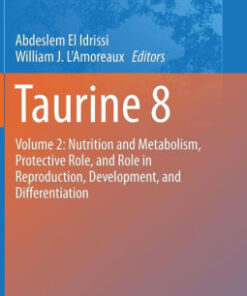(PDF) Regenerative Medicine – Laboratory to Clinic by Asok Mukhopadhyay
$18.00
Download instantly Regenerative Medicine – Laboratory to Clinic by Asok Mukhopadhyay. It is ebook in PDF format.
ISBN-10: 9811037000 ISBN-13: 9789811037009
Preview
This is the PDF eBook version for Regenerative Medicine – Laboratory to Clinic by Asok Mukhopadhyay
Table of Contents
Physical forces that regulate stem cell fate.- Pluripotent stem cells: its potential applications.- Unraveling the role of long-non coding RNAs in pluripotent stem cells-based neuronal commitment and neurogenesis.- Control of quiescence in adult stem cells.- Etiology and treatment of osteoarthritis: A developmental biological perspective.- Differences in cell populations and expression of soluble mediators between normal wound healing and healing in the diabetic.- MSC-derived exosomes as tools in regenerative medicine.- Mixing of different batches of cells permits better therapeutic potential of MSCs.- Blood to blood: new candidate for regenerative medicine.- HSC based gene therapy for blood diseases.- Allogeneic stem cell transplantation including haplo-identical stem cell transplants.- Mesenchymal stem cells and transplantation tolerance.- Ideal stem cell candidate for regenerative medicine.- Pre-clinical/clinical study on idiopathic pulmonary fibrosis.- Comparative analysis between ES and iPS cells for use in regenerative medicine: scope, advantage and safety.- Regeneration of lacrimal gland: potential and progress.- Clinical trials in cardiac regeneration using adult stem cells: Current and future prospects.- Tissue engineering for the treatment of in large bone defect.- Corneal Regeneration: Current status and future directions.- Cell therapy for retinal regeneration: current progress and future challenges.- Vaculogenesis: Importance in regeneration of solid organs.- Cord blood banking in India and the global scenario.- Prospects and retrospect of clinical applications of stem cell in veterinary sciences.- Engineering of scaffolds for soft tissue engineering.- 3D bioprinting of tissue.- Tissue engineering: Cell, scaffold and growth factor based strategies.- Pre-clinical trial: A bottleneck that impedes development of regenerative medicine.- Stem cell research work ethics and Indian stem cell research policy.





